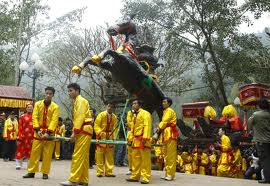
GIONG FESTIVAL AT PHU DONG AND SOC TEMPLES
The festival vividly imitates the evolution of fights of Saint Giong and Van Lang people under the 6th King Hung reign in combating against the foreign enemies
The Giong Festival is a traditional festival in commemoration and praise of the mythical hero Saint Giong, one of four immortals of Vietnamese folk beliefs.
The festival vividly imitates the evolution of fights of Saint Giong and Van Lang people under the 6th King Hung reign in combating against the foreign enemies, thereby raising the public awareness about the forms of ancient tribe war and educating the atriotism, martial art traditions, indomitable will, and independence and freedom desire of the nation. The Giong Festival is held in many locations throughout the northern part of Viet Nam, however the most typical ones are the Giong Festival at Phu Dong and Soc temples (Ha Noi).
Giong Festival at Soc Temple (Phu Linh Commune, Soc Son District, Ha Noi) is held annually from the sixth to the eighth days 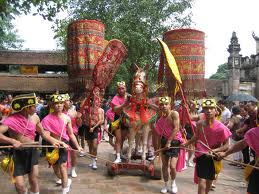 of the first lunar month. According to the legend, after defeating the foreign invaders, Soc Mountain in Phu Linh is the last stopover of the saint before flying to heaven. There are many traditional rituals during the festival such as procession ceremony, incense offering ceremony, the ritual of bathing saint’s statue and bamboo flowers offering ceremony to the Thuong (Upper) Temple where is dedicated to the Saint Giong.
of the first lunar month. According to the legend, after defeating the foreign invaders, Soc Mountain in Phu Linh is the last stopover of the saint before flying to heaven. There are many traditional rituals during the festival such as procession ceremony, incense offering ceremony, the ritual of bathing saint’s statue and bamboo flowers offering ceremony to the Thuong (Upper) Temple where is dedicated to the Saint Giong.
To prepare for the festival, at the fifth day night, people from eight villages of six communes in Soc Son District have carefully prepared offerings to the saint. On the sixth day - the opening festival day - villagers and pilgrims make incense offering to the Saint Giong Monument on Mount Da Chong. And at midnight of the same day, there is the bathing ritual of Saint Giong’s statue.
On the main festival day, the seventh day which was the saint’s ascending to heaven day according to the legend, there is a procession of bamboo flowers to the Thuong Temple as offerings to the saint. The bamboo flowers are made of a bamboo pieces that are sharpened into flowers and dyed with various colors. The worshipped saint embodies the aspiration for a peaceful country, harmonious rain and wind, and abundant harvest.
During the festival, there are other traditional games such as Chinese chess, human chess, cock fighting... and art performances of villagers as traditional opera (cheo), love duet (quan ho).
Giong Festival at Phu Dong Temple 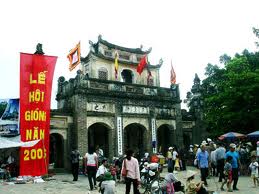
The Giong Festival at the Phu Dong Temple is held annually from the sixth to the twelfth days of the fourth lunar month in the village of Saint Giong’s birth in Phu Dong Commune, Gia Lam District, Ha Noi.
From the sixth to eighth days, there are ceremonies of carrying flags to Mau (Mother) Temple where is dedicated to the Saint Giong’s mother and carrying offerings of boiled rice and salted egg-plants to Thuong (Upper) Temple where is dedicated to the Saint Giong.
The main day of the festival is the ninth of the fourth lunar month. On this day flags are carried from the Mau Temple to the Thuong Temple to sacrifice to the saint. In addition, fighting against the Yin invaders is re-enacted. The battle is elaborately arranged with the roles of Masters (Ong Hieu) such as the Flag Master, the Drum Master, the Gong Master, the Army Master, and the Children Master – the generals of Saint Giong troop which are played by young men and 28 girls play the enemy generals.
On the tenth day, there are ceremonies of inspecting battlefield and giving offerings to the Saint Giong. On the eleventh day, the ceremony of cleaning and washing weapons with holy water takes place. On the twelfth day, a flag procession goes to announce the victorious news to heaven and earth. There are also ceremony of giving a feast to the troop and cheo performances celebrating the victory.
The Giong Festival of Phu Dong and Soc temples recognized as an intangible cultural heritage of humanity.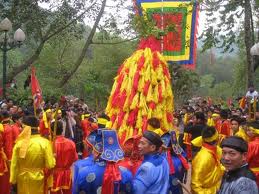
Global outstanding value of the Giong Festival is represented as a cultural phenomenon which is preserved and handed down constantly and integrally over many generations. The festival also serves as a community link and contains many creative ideas, expressing the desire for national peace and family prosperity.
The Giong Festival satisfies the criteria for inscription on the Representative List of the Intangible Cultural Heritage of Humanity, as follows:
- R1: The Giong Festival is deeply rooted in the communities of the Red River Delta as part of their identity, transmitted from generation to generation and providing them a sense of continuity;
- R2: Its inscription on the Representative List could contribute to promoting human creativity and dialogue between cultures, while providing visibility to intangible cultural heritage;
- R3: Diverse and coherent safeguarding measures have been proposed aiming to preserve, document, transmit, recognize and promote the continuity of the Giong Festival, benefiting from the commitment of the communities and the State;
- R4: The bearer and practitioner communities were consulted and provided information for the nomination, as well as their free, prior and informed consent;
- R5: The Giong Festival is inscribed in an inventory of the intangible cultural heritage of Viet Nam, maintained by the Viet Nam 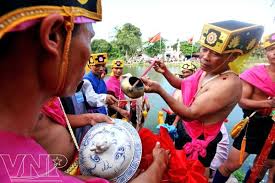 Institute of Culture and Art Studies.
Institute of Culture and Art Studies.
The Giong Festival of Phu Dong and Soc temples has officially been recognized as an intangible cultural heritage of humanity by the UNESCO since November 2010. UNESCO has shortly and fully recorded of the Giong Festival as "a Viet Nam culture museum that keeps many alluvial layers of culture and beliefs."


 Royal Gate
Royal Gate
 NIKKO HANOI
NIKKO HANOI
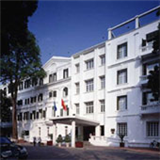 Trade Union Hotel Hanoi (Congdoan hotel)
Trade Union Hotel Hanoi (Congdoan hotel)
.jpg) Cultural Hanoi
Cultural Hanoi
 North Vietnam Exclusive
North Vietnam Exclusive
 Attractive North
Attractive North
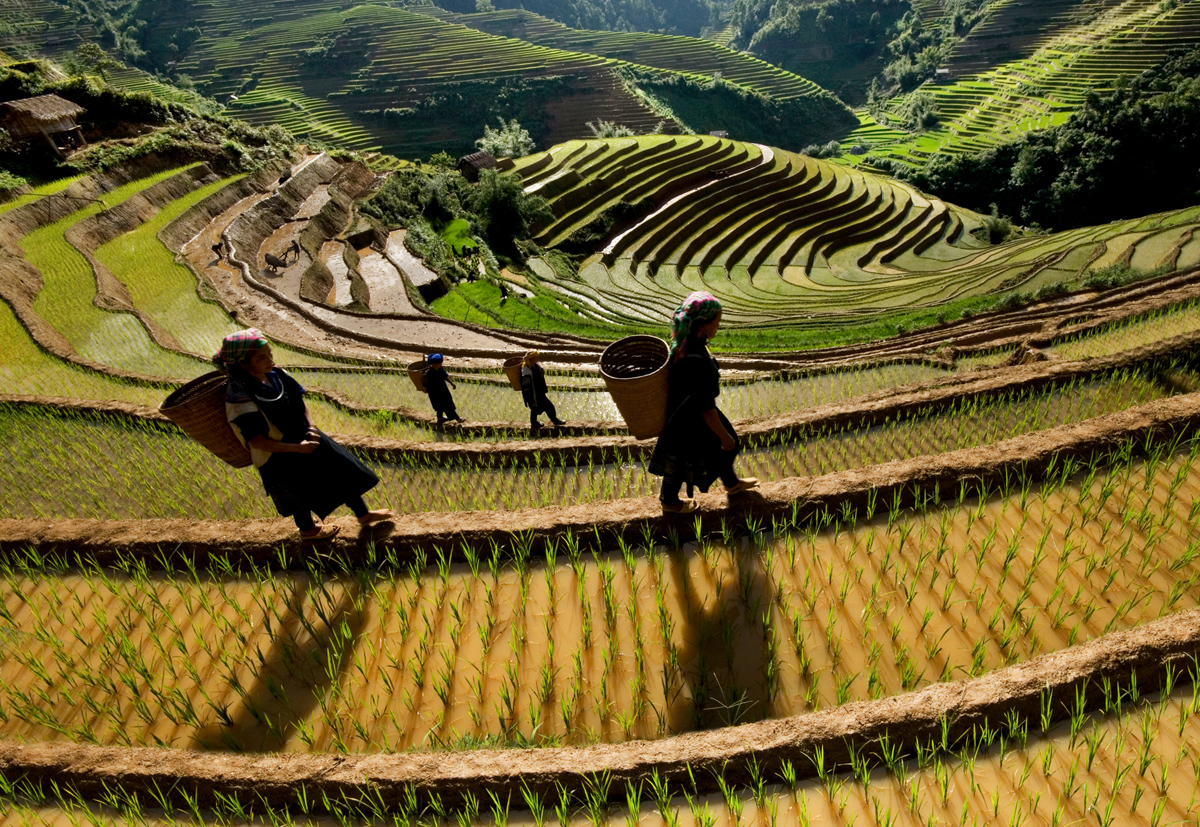 Charming North
Charming North

